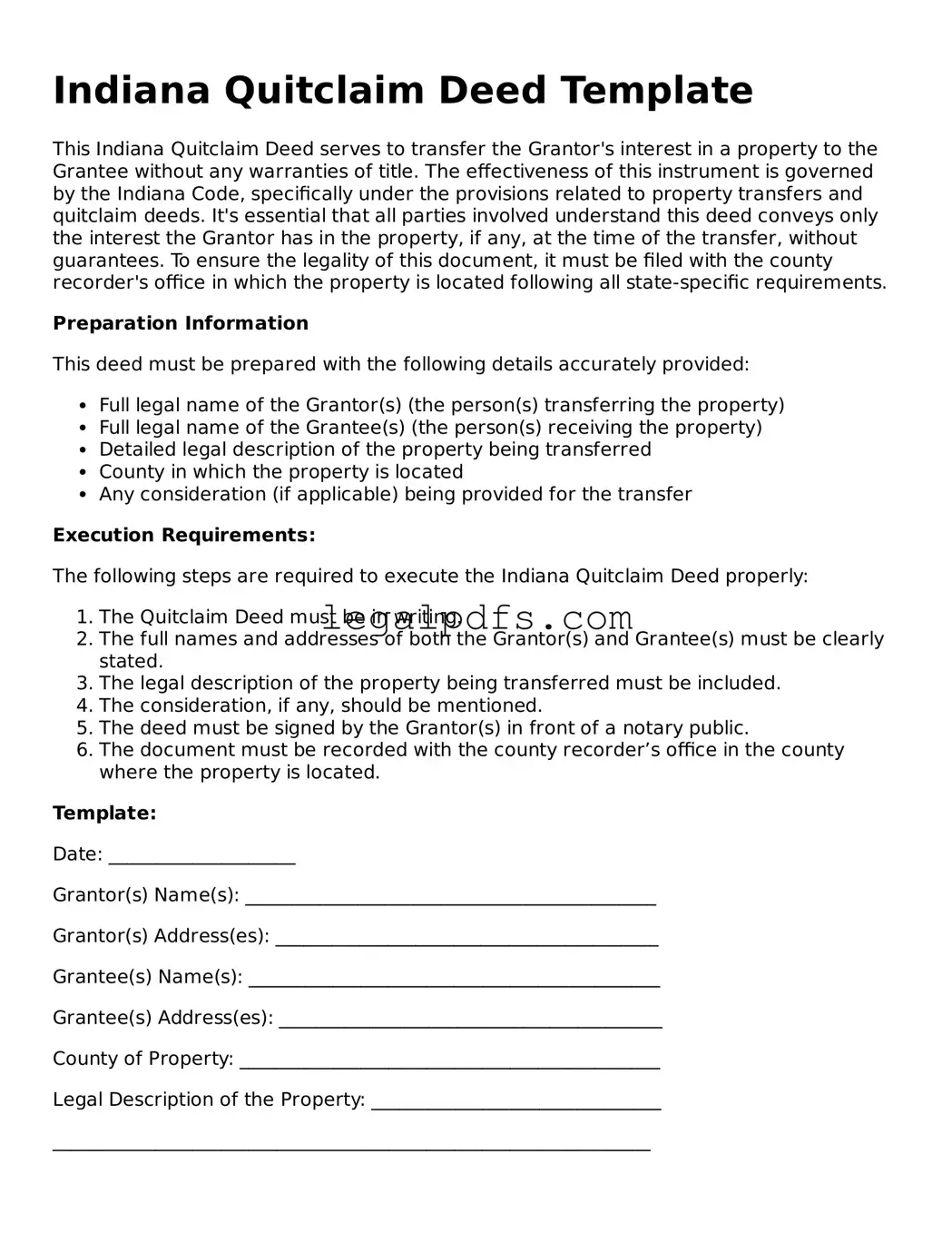Indiana Quitclaim Deed Template
This Indiana Quitclaim Deed serves to transfer the Grantor's interest in a property to the Grantee without any warranties of title. The effectiveness of this instrument is governed by the Indiana Code, specifically under the provisions related to property transfers and quitclaim deeds. It's essential that all parties involved understand this deed conveys only the interest the Grantor has in the property, if any, at the time of the transfer, without guarantees. To ensure the legality of this document, it must be filed with the county recorder's office in which the property is located following all state-specific requirements.
Preparation Information
This deed must be prepared with the following details accurately provided:
- Full legal name of the Grantor(s) (the person(s) transferring the property)
- Full legal name of the Grantee(s) (the person(s) receiving the property)
- Detailed legal description of the property being transferred
- County in which the property is located
- Any consideration (if applicable) being provided for the transfer
Execution Requirements:
The following steps are required to execute the Indiana Quitclaim Deed properly:
- The Quitclaim Deed must be in writing.
- The full names and addresses of both the Grantor(s) and Grantee(s) must be clearly stated.
- The legal description of the property being transferred must be included.
- The consideration, if any, should be mentioned.
- The deed must be signed by the Grantor(s) in front of a notary public.
- The document must be recorded with the county recorder’s office in the county where the property is located.
Template:
Date: ____________________
Grantor(s) Name(s): ____________________________________________
Grantor(s) Address(es): _________________________________________
Grantee(s) Name(s): ____________________________________________
Grantee(s) Address(es): _________________________________________
County of Property: _____________________________________________
Legal Description of the Property: _______________________________
________________________________________________________________
Consideration Provided (if any): _________________________________
State of Indiana )
County of ___________ ) ss:
On this day, ____________________, before me, a Notary Public, personally appeared ____________________ (Name of Grantor(s)), known to me (or satisfactorily proven) to be the person(s) whose name(s) is/are subscribed to the within instrument and acknowledged that he/she/they executed the same for the purposes therein contained.
In witness whereof, I hereunto set my hand and official seal.
_____________________________________
Notary Public
My Commission Expires: __________________
Instructions for Recording:
Upon completion and execution, this Indiana Quitclaim Deed must be filed with the county recorder’s office in the county where the property is located. Ensure all county-specific recording requirements and fees are met and paid to successfully record the deed.
